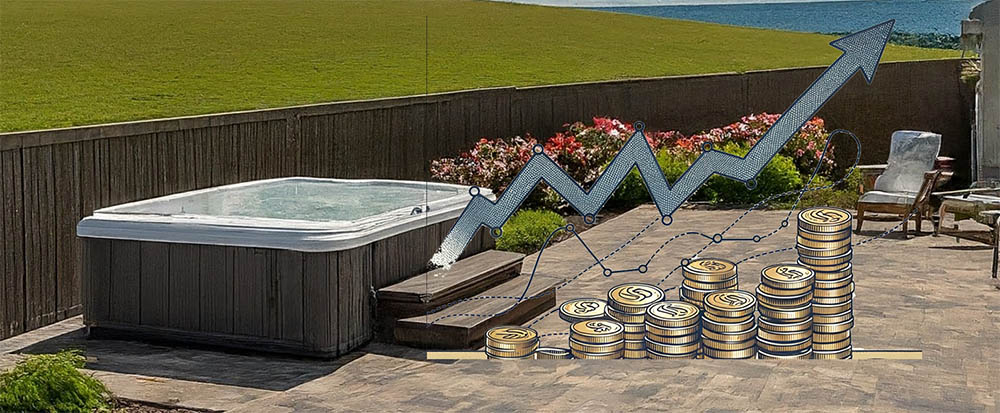
How Much Does it Cost to Run a Hot Tub?
Soaking in a hot tub is a great way to relax and unwind after a long day. But how much does it cost to run a hot tub?
The good news is that hot tubs have become more energy-efficient in recent years. However, the cost of running a hot tub can still vary depending on a number of factors, including the size of the hot tub, the type of insulation, the type of heater, the climate you live in, and how often you use the hot tub.
In short,
How Much Does it Cost to Run a Hot Tub?
Contents
- 1 How Much Does it Cost to Run a Hot Tub?
- 2 List of Components of a Hot Tub That Require Power to Run
- 3 Factors That Affect the Running Cost of a Hot Tub
- 3.1 Temperature Settings:
- 3.2 Frequency of Use:
- 3.3 Hot Tub Size:
- 3.4 Insulation:
- 3.5 Cover Quality:
- 3.6 Ambient Temperature and Climate:
- 3.7 Heater and Pump Efficiency:
- 3.8 Maintenance and Upkeep:
- 3.9 Type of Hot Tub:
- 3.10 Water Care System:
- 3.11 Electrical Rates:
- 3.12 Additional Features:
- 3.13 Usage of Jets and Blowers:
- 4 How Much Does it Cost to Run a Hot Tub – Inflatable vs Regular Hot Tub
- 5 Hot Tub Maintenance
- 6 Smart Strategies for Reducing Your Hot Tub’s Running Costs
- 7 Final Thoughts
As a general rule of thumb, you can expect to pay around $50-$200 per month to run a hot tub. This is based on the assumption that you use the hot tub for 2 hours daily and keep the water temperature at around 100 degrees Fahrenheit.
The two sectors where you have to spend money are power and maintenance.
Estimated cost of running a hot tub 24/7:

The monthly running cost may go as high as $400 (or more) per month in some cases (especially in winter). The bill depends on many factors, let’s delve into the details.
Read more on:
Should My Inflatable Hot Tub Pump Run All The Time?
But first, you need to know the list of components of a hot tub that need power to run.
List of Components of a Hot Tub That Require Power to Run
The list of components varies from hot tub to hot tub, and also the type of hot tub. By type I mean is it a regular hot tub or an inflatable one?
Most inflatable hot tubs do not have jets, Ozonators, or waterfalls. But some have jets.
Components of an Inflatable Hot Tub that Need Power
Inflatable hot tubs, while simpler than their hard-shelled relatives, still share some key components that need power to bring you those bubbly joys. Here’s what’s typically powered up in an inflatable hot tub:
- Heater: The heater is the most power-intensive component. Inflatable hot tub heaters usually range from about 1,200 to 1,500 watts. This component works continuously to maintain the water at your desired temperature.
- Pump: The water pump, which circulates water through the filter and heater, commonly uses between 50 to 100 watts. The pump needs to run several hours a day to keep the water clean and at the right temperature.
- Air Blower: For inflatable hot tubs with air jets, the blower that produces bubbles usually requires about 600 to 800 watts. While not in use as constantly as the heater, it does draw a significant amount of power when turned on.
- Control System: The digital control panel that allows you to set the temperature and control the jets typically uses a negligible amount of power, around 5 to 10 watts, but it’s on 24/7, contributing slightly to the overall power usage.
- LED Lights (if included): Some inflatable hot tubs come with LED lights for ambiance, which are relatively low in power consumption, typically around 5 to 20 watts depending on the number and type of lights.
Inflatable hot tubs often have a combined unit that houses the heater, air pump, and filtration system, making them compact but still dependent on a good amount of electricity to keep everything running smoothly. The control panel usually consumes very little power — just enough to keep those LED displays and buttons responsive to your touch.
Components of a Regular Hot Tub that Need Power
With the standard, more permanent hot tubs, you’ll find a few more complexities in the components that demand power. Here’s the lowdown on what in a regular hot tub will have your electricity meter working:
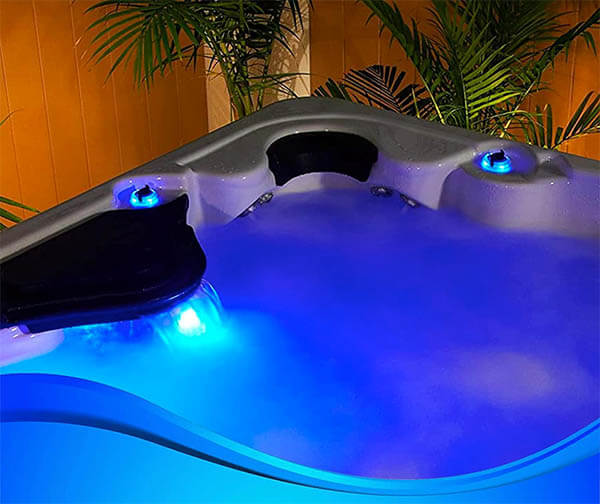
- Heater: This is the biggest power user. A typical heater can use between 1.0 kW to 6 kW, depending on the size of the hot tub and the temperature of the environment.
- Pump(s):
- Circulation Pump: Usually runs on a lower power, around 0.1 kW to 0.25 kW since it’s designed to run continuously at low speed.
- Jet Pump: This consumes more power, often between 1.5 kW to 2.5 kW, but it’s not running all the time.
- Blower: If your hot tub has an air blower, it can use around 0.7 kW to 1.5 kW.
- Control System: The electronic control system is relatively low on power consumption, typically using less than 0.1 kW.
- Lights: LED lights are common in modern hot tubs and are quite efficient, often using less than 0.05 kW in total.
- Ozone Generator: This component is also a lower energy user, generally around 0.05 kW to 0.1 kW.
- Stereo System: Depending on the system, this could use between 0.1 kW to 0.25 kW.
- Water Features: Waterfalls and fountains usually share the power with the pump but may add 0.1 kW to 0.2 kW due to increased load.
- Wi-Fi/Smart Features: These advanced features use a negligible amount of power, typically less than 0.05 kW.
Each component has been designed with both comfort and efficiency in mind, but they all contribute to the overall energy consumption of your hot tub. Understanding the role each part plays can help you manage energy use and enjoy your soak without excess concern over your electric bill.
Factors That Affect the Running Cost of a Hot Tub
When you’re looking at the running costs of a hot tub, it’s a bit like considering what affects your car’s fuel efficiency. There’s a mix of obvious and not-so-obvious factors. Let’s bubble up to the surface the elements that have a say in how much your hot tub is going to cost you in the long run:
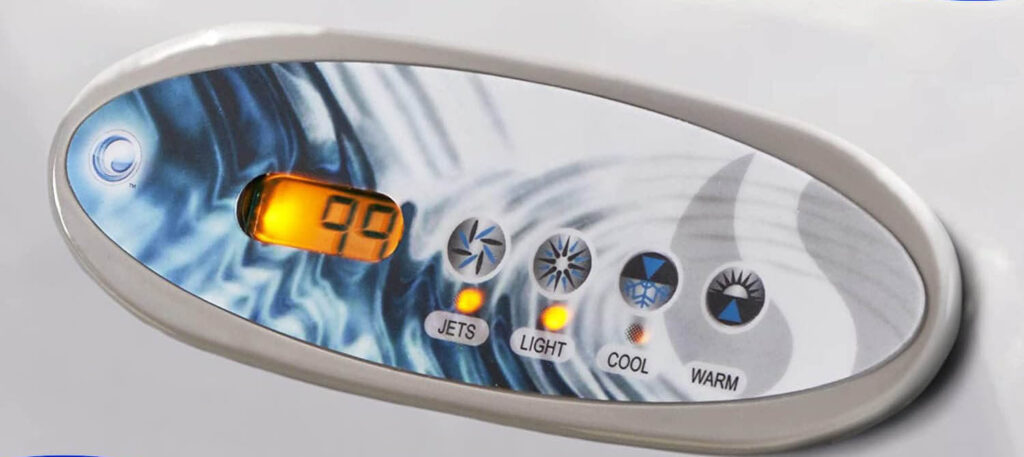
Temperature Settings:
The temperature you set your hot tub at is one of the biggest factors impacting running costs; the higher the heat, the more energy it takes to maintain. For every degree you lower the temperature, you could see a noticeable dip in your energy bill, especially during colder months. It’s a delicate balance between comfort and cost, but even a small adjustment can lead to significant savings over time.
Frequency of Use:
How often you indulge in a hot tub session plays a critical role in determining your running costs. If you’re a daily dipper, the energy required to keep the tub at the ready will be consistent and higher. On the flip side, if you’re more of a weekend warrior, soaking occasionally, you’ll likely see a reduction in energy usage since the tub isn’t maintaining that toasty temperature around the clock.
Hot Tub Size:
The size of your hot tub, specifically its water capacity, directly influences your running costs. Larger tubs require more water to fill and, consequently, more energy to heat and maintain that warmth. So, if you’ve got a spacious model that’s the neighborhood’s hot spot, be prepared for it to reflect in your energy expenses compared to a cozy, smaller tub that’s just for you or a couple of friends.
A larger surface area means you will be losing heat faster.
Insulation:
Insulation is a silent hero when it comes to running a hot tub cost-effectively. Top-notch insulation keeps the heat trapped, reducing the energy needed to maintain your steamy sanctuary at the perfect temperature. So, a well-insulated hot tub can be a game-changer for your energy bills, minimizing heat loss and maximizing savings.
Cover Quality:
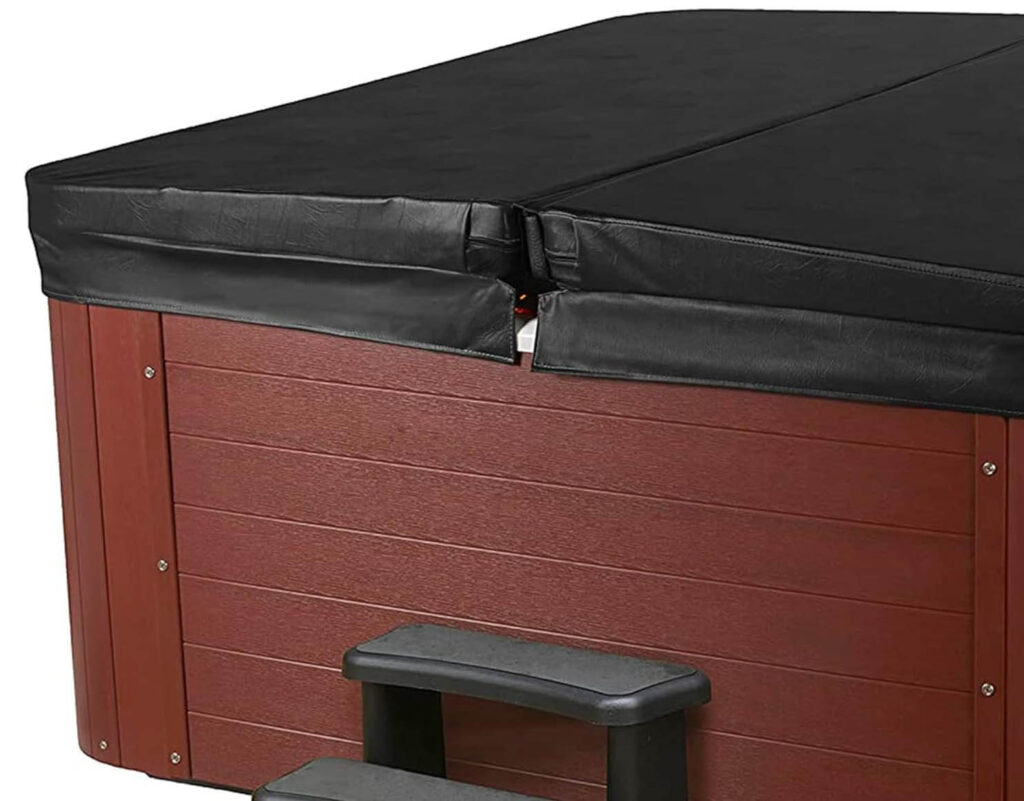
The quality of your hot tub cover has a significant impact on running costs. A high-quality, well-fitting cover acts as a barrier against heat loss, ensuring the warmth stays in the water, not in the air. Skimping on a cover is like leaving a window open during a snowstorm; you’ll lose precious heat and, as a result, spend more to keep that water toasty.
Ambient Temperature and Climate:
The ambient temperature and the climate where you live are big players in the cost of running a hot tub. If you’re in a chillier region, your hot tub has to work overtime to keep the water warm, hiking up energy use. Conversely, a milder climate can be a friend to your wallet, as the hot tub doesn’t have to fight against the cold, making it cheaper to run.
Heater and Pump Efficiency:
The efficiency of your hot tub’s heater and pump can make or break your energy budget. Modern, energy-efficient models work smarter, not harder, using less power to keep your waters warm and circulating. If your heater and pump are older or less efficient, they can be the energy hogs of your hot tub, quietly inflating your monthly bills.
Maintenance and Upkeep:
Regular maintenance and upkeep are crucial for keeping your hot tub’s running costs in check. A well-maintained hot tub runs more efficiently, avoiding the extra energy and costs associated with overworking due to clogged filters or a struggling pump. Plus, staying on top of upkeep can prevent costly repairs down the line, ensuring your soak sessions remain a source of relaxation, not financial stress.
Type of Hot Tub:
The type of hot tub you own, whether it’s a regular, hard-sided model or an inflatable one, also plays into your running costs. Regular hot tubs typically have more robust insulation and more durable components, which can mean higher initial costs but potentially lower running costs over time.
In contrast, inflatable hot tubs might be easier on the wallet at first glance, but their need for constant heating due to less insulation can lead to higher energy bills in the long run. On the flip side, the inflatable hot tubs have fewer components that need power.
Water Care System:
The water care system you choose for your hot tub is another factor that can affect running costs. Systems that use saltwater or ozone can be more energy-efficient and require fewer chemicals, which can save money over time. On the flip side, traditional chlorine or bromine systems may demand more frequent water testing and adjustments, potentially leading to higher maintenance costs and energy usage to circulate these chemicals effectively.
Electrical Rates:
Electrical rates are a variable beast, with peak versus off-peak hours, and regional differences, like California versus Louisiana, playing a big part in your hot tub’s running costs.
Using your tub during off-peak hours can trim the bill, as rates are generally lower when demand is down. Plus, the tiered rate structure many utilities use means that the more electricity you consume (hello, tier 2), the higher the rate can climb. So, where you live and when you decide to take a dip can make a noticeable difference in how much you’re shelling out to run your hot tub
The cost per kilowatt-hour (kWh) in your area directly impacts running costs. Using your hot tub during off-peak hours can save on electricity costs.
Here is an example
California
| Region | Peak hours | No-peak hours | Tier 1 | Tier 2 |
| Southern California | 12pm - 6pm | 6pm - 12pm | 24.77¢/kWh | 41.87¢/kWh |
| Northern California | 1pm - 6pm | 6pm - 1pm | 22.69¢/kWh | 38.36¢/kWh |
Louisiana
| Region | Peak hours | No-peak hours | Tier 1 | Tier 2 |
| Entergy Louisiana | 2pm - 6pm | 6pm - 2pm | 12.84¢/kWh | 17.68¢/kWh |
| Cleco | 1pm - 5pm | 5pm - 1pm | 11.74¢/kWh | 16.02¢/kWh |
| SLEMCO | 1pm - 6pm | 6pm - 1pm | 10.94¢/kWh | 14.94¢/kWh |
(The actual rates may vary)
Additional Features:
Additional features on your hot tub, like mood lighting, waterfalls, or built-in speakers, while enhancing the soaking experience, can also affect the running costs. Each of these features requires power to function, adding to the overall energy consumption. So, while they’re great for setting the vibe for relaxation or entertainment, they do come with the consideration of increased electrical usage and therefore, an uptick in operational costs.
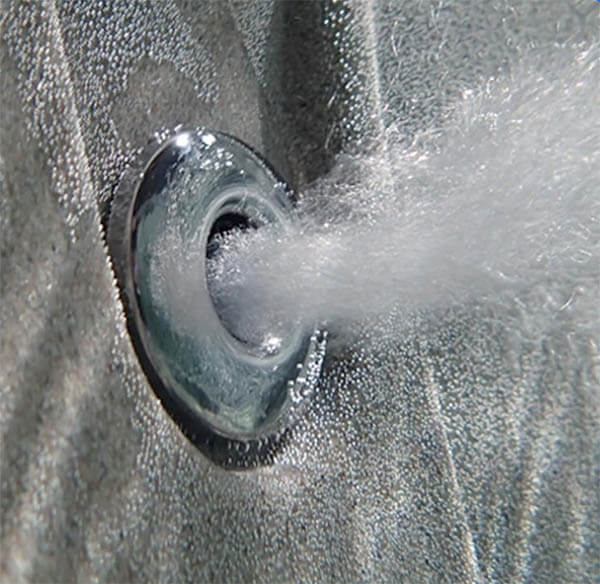
Usage of Jets and Blowers:
Cranking up the jets and blowers in your hot tub might feel fantastic, but it’s worth noting that more bubbles can equate to more heat loss. As these features agitate the water and introduce air into the mix, they can cool down the water temperature quicker, prompting your heater to kick into overdrive to maintain that toasty feel. So, while the massage effect is a big part of the hot tub allure, frequent use of high-powered jets and blowers can lead to a noticeable uptick in energy consumption.
Understanding these factors can help you make informed decisions about hot tub usage and potential upgrades for efficiency. It’s all about balancing the joy of a soak with the cold hard reality of the electric bill.
How Much Does it Cost to Run a Hot Tub – Inflatable vs Regular Hot Tub
Below is a simplified table that contrasts the components of inflatable and regular hot tubs, along with a general range of their power consumption. Remember, these are ballpark figures and can vary based on specific models, features, and manufacturer specifications.
Power Consumption Compression Between Inflatable and Regular Hot Tubs
| Component | Inflatable Hot Tub Power Consumption | Regular Hot Tub Power Consumption |
| Heater | 1.0 - 1.5 kW | 1.5 - 6.0 kW |
| Water Pumps | - | Circulation Pump: 0.1 - 0.25 kW |
| Jet Pump: 1.5 - 2.5 kW | ||
| Air Pump/Blower | Combined with air jets: 0.5 - 1.0 kW | Blower: 0.7 - 1.5 kW |
| Control System | < 0.1 kW | < 0.1 kW |
| Lighting | < 0.1 kW (if present) | 0.05 - 0.1 kW |
| Ozone/UV Sanitizing | - | 0.05 - 0.1 kW |
| Systems | ||
| Stereo Systems | - | 0.1 - 0.25 kW (if present) |
| Additional Water Features | - | Varies with pump load |
| Wi-Fi/Smart Features | < 0.1 kW (if present) | < 0.1 kW (if present) |
| Total Power Consumption | 1.6 - 2.6 kW | 4.8 - 10.35 kW |
For the inflatable hot tub, the air pump that’s used for inflation is typically the same one that powers the air jets. This is why there is a range provided that may encompass the power needed for both functions. It’s also worth noting that not all inflatable hot tubs will have lighting or Wi-Fi features, which are more common in regular hot tubs.
Based on the above consumption and the rates,
How much do hot tubs cost to run
For an average inflatable hot tub:

For an average regular hot tub:

The running cost looks a bit extreme because we are assuming all the relevant components will be running 24 hours a day, but they will not. Most modern components are designed to save energy and run only when it is needed. Some control panels allow you to schedule the run time, saving up to 50% of the energy consumption.
Hot Tub Maintenance
Maintaining a hot tub is crucial not only for ensuring a safe and pleasant soaking experience but also for extending the life of your hot tub. Here’s a breakdown of what goes into the maintenance cost:
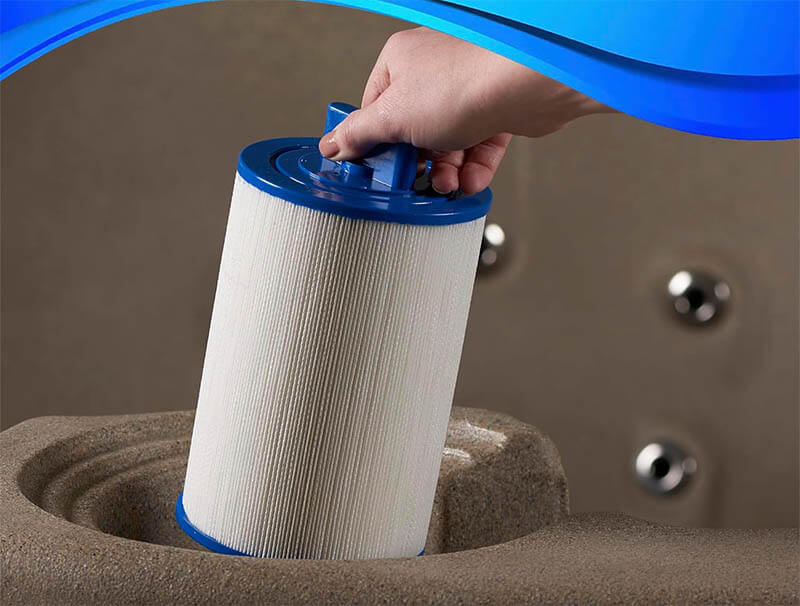
- Chemicals: Keeping the water clean involves a regimented balance of chemicals like chlorine or bromine, pH balancers, and anti-foaming agents. The cost varies, but you’re typically looking at spending on these essentials monthly.
- Filters: Filters catch debris and keep the water clear. Depending on usage, you’ll need to clean them regularly and replace them periodically. Filter replacements can add up over the course of a year.
- Energy Costs: Heating the water is typically the most significant part of running a hot tub. The cost can vary widely based on your local energy rates, how often you use the hot tub, and the efficiency of your heating system.
- Water Use: You’ll need to change the water in your hot tub every three to four months, which can impact your water bill, especially if you live in an area with high water rates.
- Repairs: Over time, parts wear out or break. You may need to budget for occasional repairs to pumps, heaters, or electronic components. Sometimes, warranties cover these, but when they don’t, the costs can be significant.
- Professional Services: Some hot tub owners opt for a professional service to come in and take care of the chemical balance and cleaning. This service adds to the cost but can be a convenient option for those with less time to spare.
- Covers: Hot tub covers don’t last forever. Weather and regular use can wear them out, requiring replacement every few years to ensure effective insulation.
- Cleaning Supplies: From test strips to scrubbers for cleaning the tub’s interior, the small costs of these supplies can add up.
In essence, while owning a hot tub is certainly an investment in your well-being and home entertainment, it’s important to budget for these ongoing maintenance costs to keep your hot tub in splash-worthy condition.
Hot Tub Maintenance Cost
Estimating the exact maintenance cost for a hot tub can be a bit like trying to nail jelly to a wall—it varies. But let’s dip our toes into some averages to give you a ballpark figure.
Chemicals: You’re probably looking at around $20 to $30 a month to keep your hot tub’s chemistry singing.
Filters: A set of filters can range between $20 to $75, and you might replace these once or twice a year.
Energy Costs: This is the big one. Monthly, it could be anywhere from $10 to $50, depending on your local energy rates, hot tub efficiency, and usage patterns.
Water Use: Refilling your tub could add an extra $1 to $4 to your water bill every few months, again depending on local rates and the size of your tub.
Repairs: A broad range here, but setting aside $150 to $500 a year should cover unexpected issues if they pop up.
Professional Services: If you’d rather leave the testing and balancing to the pros, it could cost you around $100 to $200 per visit, with the frequency depending on your preference.
Covers: A good quality hot tub cover might be in the region of $50 to $400, and they generally last 3-5 years.
Cleaning Supplies: Small costs that can add up to around $5 to $20 a month.
Adding it all up, you could be looking at an average annual maintenance cost of about $350 to $800, give or take. It’s wise to keep a little extra tucked away though, for those just-in-case moments when your hot tub decides to throw a curveball.
Smart Strategies for Reducing Your Hot Tub’s Running Costs
Slashing the running costs of your hot tub doesn’t have to mean cutting down on your splashy leisure time. Here are some smart strategies that can help keep your bills as relaxed as you are after a good soak:
- Upgrade to a Smart Thermostat: Install a smart thermostat that can be programmed to lower the temperature during hours you’re less likely to use the hot tub. Every degree counts in energy savings.
- Keep it Covered: Always cover your hot tub when not in use. A quality, well-fitting cover provides excellent insulation and prevents heat from escaping, saving on heating costs.
- Regular Maintenance: Stay on top of maintenance like cleaning filters and checking for leaks. A hot tub in tip-top shape runs more efficiently, avoiding unnecessary energy expenditure.
- Windbreaks: Install windbreaks such as fencing or shrubbery around your hot tub. Wind can cool the water faster, prompting your heater to work harder.
- Efficient Water Care: Consider switching to a saltwater system or a similar efficient water care system to reduce the use and cost of chemicals.
- Off-Peak Usage: Run your hot tub during off-peak energy hours if your utility company offers lower rates. Heating and filtering during these times can lead to substantial savings.
- Use a Thermal Blanket: Place a floating thermal blanket under your hot tub cover. This extra layer of insulation can help retain heat and reduce energy costs.
- Energy-Efficient Components: When parts need replacing, opt for energy-efficient pumps and heaters that can significantly reduce power usage.
- Eco-Friendly Settings: Many modern hot tubs have eco-friendly settings that minimize energy use without a noticeable difference in performance.
- Monitor Your Usage: Keep an eye on your hot tub usage. Sometimes, reducing the running time by even a small amount can decrease energy consumption.
Implementing these strategies doesn’t have to be a hassle, and the payoff will be worth it when you see a drop in your energy bills. Plus, knowing you’re running a more environmentally friendly hot tub can add to the sense of relaxation.
Final Thoughts
The cost of running a hot tub can vary depending on several factors, including the size of the hot tub, the type of insulation, the type of heater, the climate you live in, and how often you use the hot tub. However, you can expect to pay around $50-$200 per month to run a hot tub.
Running a hot tub involves two main costs: the power to keep it hot and bubbly, and the maintenance to keep it clean and functional. Power costs hinge on various factors like local energy rates, how often you use the hot tub, its size, and the efficiency of its components. Maintenance, on the other hand, includes the regular purchase of chemicals, filter replacements, and the occasional repair or professional service call.
Tallying up the total, owning a hot tub is certainly a commitment—not just of time and backyard space, but of your hard-earned cash. Still, for many, the squeeze on the bank account is worth the juice: the relaxation, the social hub, the quiet nights under the stars. It’s all about balancing the practicalities with the pleasures. Sure, it might cost a pretty penny to keep your hot tub humming, but can you really put a price tag on the joy of sinking into those warm, bubbly waters after a long day?

